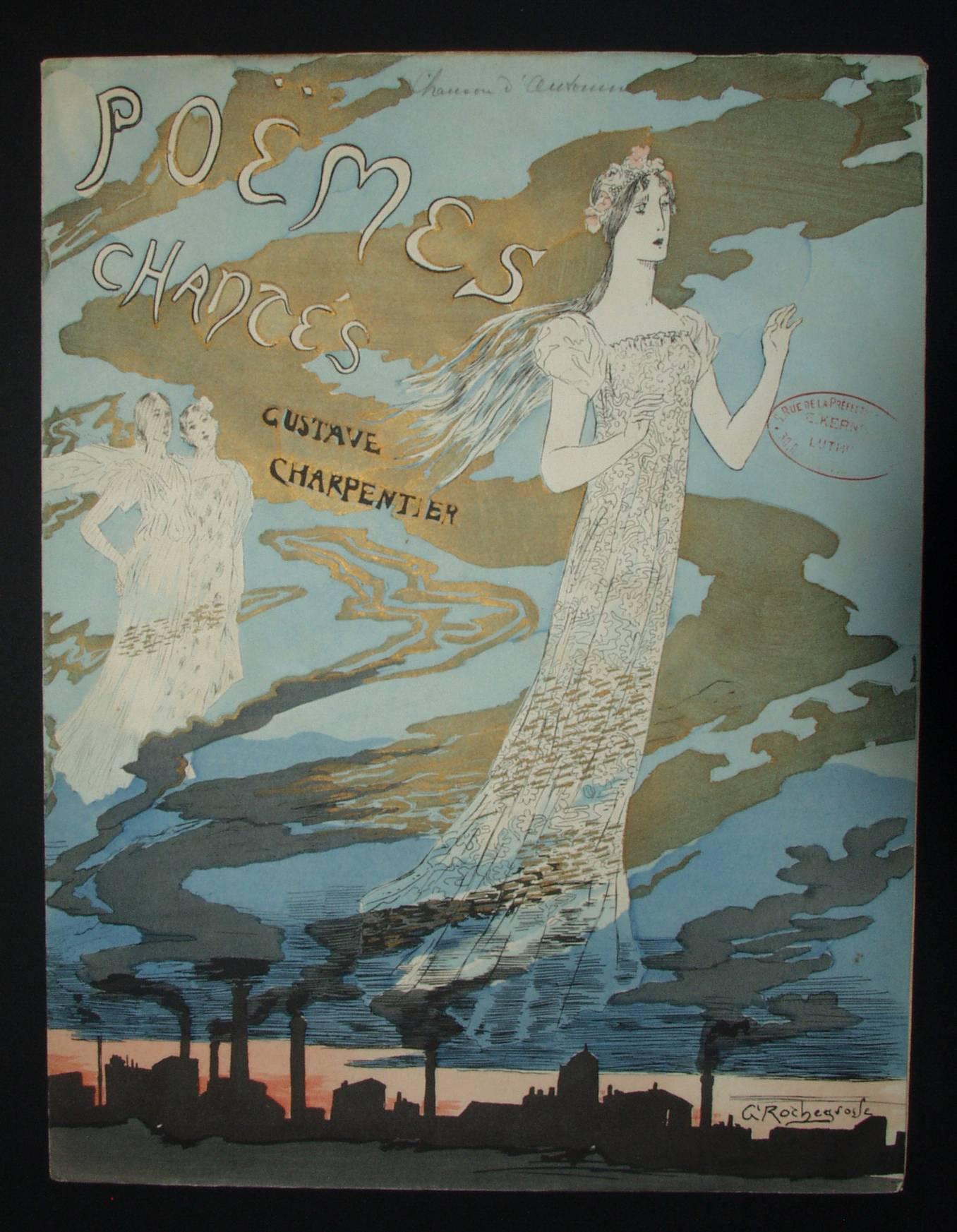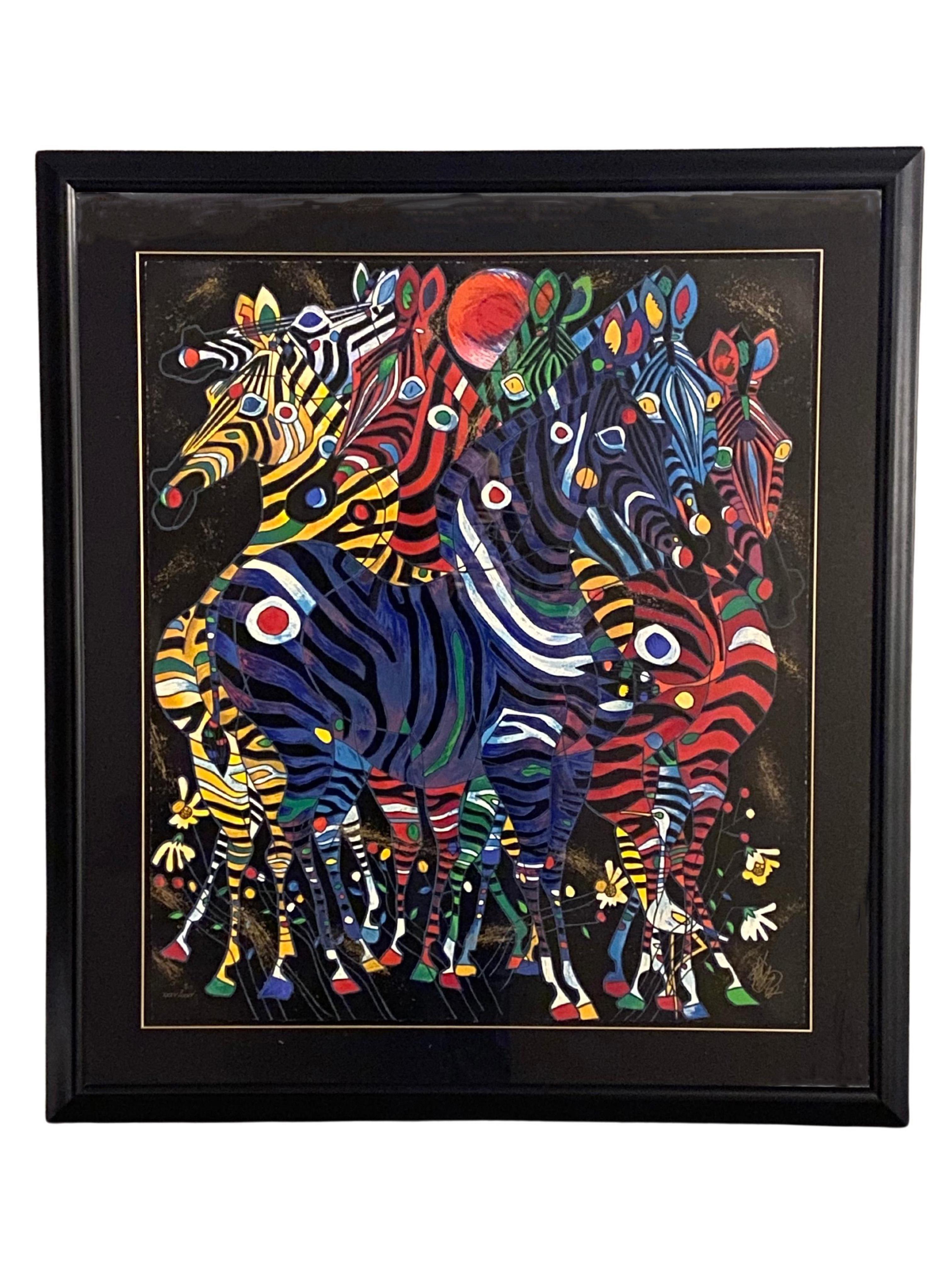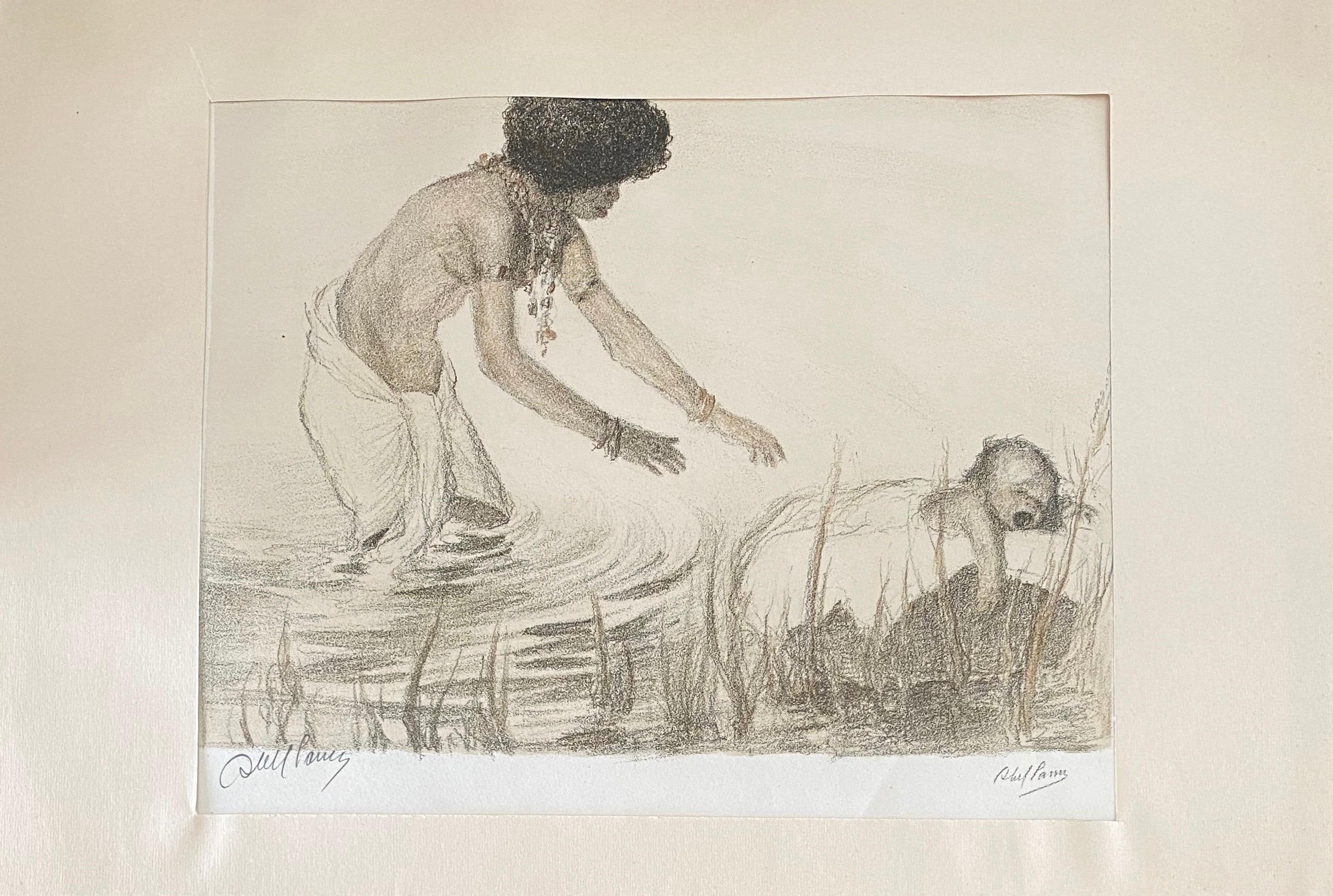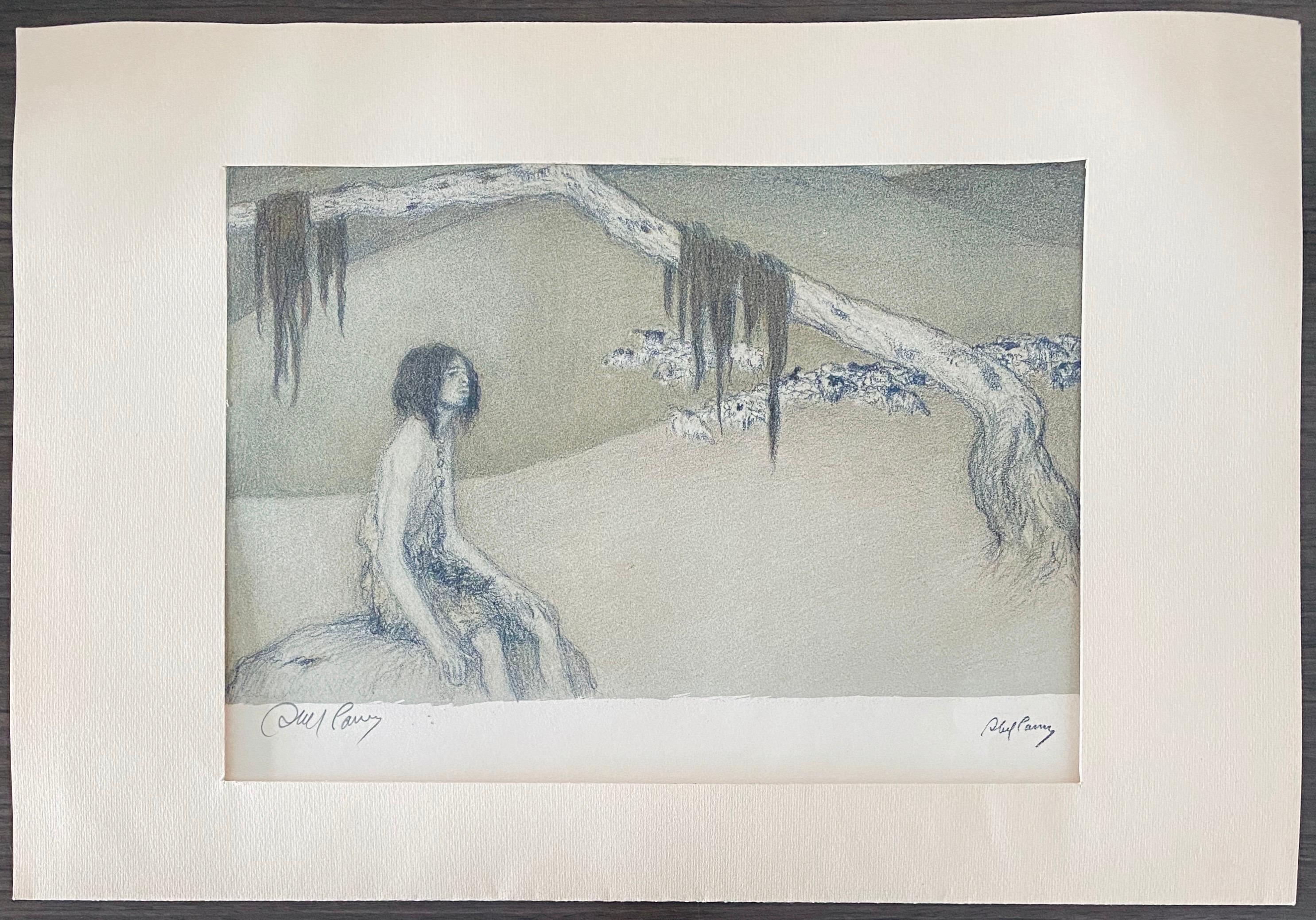Items Similar to Illustration from the series "Les Fleurs du Mal" after Odilon Redon - 1923
Want more images or videos?
Request additional images or videos from the seller
1 of 5
Illustration from the series "Les Fleurs du Mal" after Odilon Redon - 19231923
1923
About the Item
Illustration from the series "Les Fleurs du Mal" is an etching print realized after Odilon Redon and published by Henri Felury in 1923.
Monogrammed in the plate.
Good conditions.
Odilon Redon (Bordeaux, 1840 - Paris, France). Redon's far-reaching influence falls into two categories corresponding to the two main threads in his oeuvre: his extraordinarily vivid and colorful late paintings and pastels, and his earlier noirs. For the Nabis, it was Redon's free and expressive use of color that would have the most impact. Maurice Denis credited Redon with advancing the spiritual evolution of his own art, while Pierre Bonnard said of Redon, "All of our generation fell under his charm and received his advice." Later, Henri Matisse acknowledged the influence of Redon's pastels on his own colorful Fauvist palette. But the impact of Redon's noirs on modern art was perhaps even more profound, for in them we find his greatest originality and inventiveness. The Surrealists were particularly taken with the dreamlike quality of those charcoals and lithographs, and André Breton, their de-facto leader, was a particularly great admirer. A key part of Redon's influence was the suggestiveness of his art - rather than describing things for us, the viewer participates actively in interpreting the work.
- Creation Year:1923
- Dimensions:Height: 17.72 in (45 cm)Width: 12.6 in (32 cm)Depth: 0.04 in (1 mm)
- Medium:
- Movement & Style:
- After:Odilon Redon (1840 - 1916, French)
- Period:
- Condition:Due to the date/importance of the work, an export certificate will be required. It should take around 20 working days.
- Gallery Location:Roma, IT
- Reference Number:
About the Seller
4.9
Platinum Seller
These expertly vetted sellers are 1stDibs' most experienced sellers and are rated highest by our customers.
1stDibs seller since 2017
6,717 sales on 1stDibs
Typical response time: 2 hours
- ShippingRetrieving quote...Ships From: Grasse, France
- Return PolicyA return for this item may be initiated within 14 days of delivery.
More From This SellerView All
- The European Macabre Dance N.7 - Lithograph by A. Martini - 1915By Alberto MartiniLocated in Roma, ITThe European Macabre Dance N.7 is a hand-colored lithograph, from the Series "La Danza Macabra Europea" illustrated by Alberto Martini (Oderzo, 1876 – Milan, 1954) in 1915. Signed on the plate, Original Edition. Published by Domenico Longo, Treviso. Handcolored lithographic postcards. Very good conditions. Alberto Martini (Oderzo, 1876 - Milan, 1954); was an Italian draftsman, painter, engraver and illustrator, forerunner of the surrealist movement...Category
1910s Symbolist Figurative Prints
MaterialsLithograph
- The European Macabre Dance N.6 - Lithograph by A. Martini - 1915By Alberto MartiniLocated in Roma, ITThe European Macabre Dance N.6 is a hand-colored lithograph, from the Series "La Danza Macabra Europea" illustrated by Alberto Martini (Oderzo, 1876 – Milan, 1954) in 1915. Signed ...Category
1910s Symbolist Figurative Prints
MaterialsLithograph
- The European Macabre Dance N.28 - Lithograph by A. Martini - 1915By Alberto MartiniLocated in Roma, ITThe European Macabre Dance N.28 is a hand-colored lithograph, from the Series "La Danza Macabra Europea" illustrated by Alberto Martini (Oderzo, 1876 – Milan, 1954) in 1915. Signed...Category
1910s Symbolist Figurative Prints
MaterialsLithograph
- The European Macabre Dance N.1 - Lithograph by A. Martini - 1915By Alberto MartiniLocated in Roma, ITThe European Macabre Dance N.1 is an hand-colored lithograph, from the Series "La Danza Macabra Europea" illustrated by Alberto Martini (Oderzo, 1876 – Milan, 1954) in 1915. Signed...Category
1910s Symbolist Figurative Prints
MaterialsLithograph
- The European Macabre Dance N.12 - Lithograph by A. Martini - 1915By Alberto MartiniLocated in Roma, ITThe European Macabre Dance N.12 is a hand-colored lithograph, from the Series "La Danza Macabra Europea" illustrated by Alberto Martini (Oderzo, 1876 – Milan, 1954) in 1915. Origina...Category
1910s Symbolist Figurative Prints
MaterialsLithograph
- The European Macabre Dance N.10 - Lithograph by A. Martini - 1915By Alberto MartiniLocated in Roma, ITThe European Macabre Dance N.10 is a hand-colored lithograph, from the Series "La Danza Macabra Europea" illustrated by Alberto Martini (Oderzo, 1876 – Milan, 1954) in 1915. Original Edition. Published by Domenico Longo, Treviso. Handcolored lithographic postcards. Very good conditions. Alberto Martini (Oderzo, 1876 - Milan, 1954); was an Italian draftsman, painter, engraver and illustrator, forerunner of the surrealist movement...Category
1910s Symbolist Figurative Prints
MaterialsLithograph
You May Also Like
- Serenity. 1992., paper, lithograph, 65x50, 3 cmBy Alain RothsteinLocated in Riga, LVSerenity. 1992., paper, lithograph, 65x50,3 cmCategory
1990s Symbolist Portrait Prints
MaterialsPaper, Lithograph
- Antoine Georges Marie RochgrosseBy Georges Antoine RochegrosseLocated in New York, NYRochgrosse, Antoine Georges Marie. Poems Chantes/Gustave Carpentier /Paris/Henri Tellier, Editeur. 1896. 7 Color lithograph. Das fruhe Plakat 750 (Music Sheet). French painter, pri...Category
1880s Symbolist Figurative Prints
MaterialsLithograph
- "Harmony" Colorful Zebras Lithograph by Chinese Artist Jiang Tie-Feng #35/75Located in Pasadena, CAThe serigraph on paper signed and numbered 35/75 rests in a black lacquer frame. It features a multicolor zebras gathering, one very thought after subject from this artist. Chinese A...Category
1970s Symbolist Animal Prints
MaterialsLithograph
- Abel Pann Israeli Bezalel School Lithograph Judaica Biblical Print Jewish ArtBy Abel PannLocated in Surfside, FLAbel Pann (1883–1963) was a European Jewish painter who settled in the Talpiot neighborhood of Jerusalem in the early twentieth century and taught at the Bezalel Academy of Art under Boris Schatz. Abba Pfeffermann (later Abel Pann), born in Latvia or in Kreskowka, Vitebsk, Belarus, was a European Russian Jewish artist who immigrated to Ottoman Palestine and settled in Jerusalem. He was married to Esther Nussbaum. Pann's youngest son was killed in the 1947–1949 Palestine war. After that loss, he turned to painting scenes of the Holocaust. He died in Jerusalem in 1963. Pann studied the fundamentals of drawing for three months with the painter Yehuda Pen of Vitebsk, who also taught Marc Chagall. In his youth, he traveled in Russia and Poland, earning a living mainly as an apprentice in sign workshops. In 1898 he went south to Odessa, where he was accepted into the Academy of Fine Arts. In 1903, he was in Kishinev, where he documented the Kishinev pogrom with drawings; an effort that is thought to have contributed to his self-definition as an artist who chronicles Jewish history. Still in 1903, he moved to Paris, where he rented rooms in La Ruche, a Parisian building (which still exists) where Modigliani, Chagall, Chaim Soutine and other Jewish artists also lived. Pann studied at the French Academy under William-Adolphe Bouguereau. He earned his living primarily by drawing pictures for the popular illustrated newspapers of the era. In 1912, Boris Schatz, founder and director of the Bezalel Academy of Arts and Design visited Pann in Paris and invited him to come work in Jerusalem. In 1913, after traveling in Southern Europe and Egypt, Pann arrived in Jerusalem, where he had decided to settle for life. Pann went to see Schatz and it was decided that he would head the painting department at the Bezalel Academy for several months while Schatz embarked on an extensive overseas fund-raising trip. According to Haaretz art critic Smadar Sheffi, a work form this period with the simple title "Jerusalem" shows a cluster of buildings at sunset "with a sky in blazing orange." The painting is "more expressive and abstract that is typical of his work," and Sheffi speculates that "the encounter with the city" of Jerusalem was a "strong emotional experience" for the artist. Pann returned to Europe to arrange his affairs before moving permanently to the British Mandate of Palestine, but was caught on the continent by World War I. Pann's wartime paintings would prove to be among "the most important" of his career. He made many posters to support the French war effort. He also made a series of fifty drawings showing the extreme suffering of Jewish communities caught in the fighting between Germany, Poland and Russia. Art critic Smadar Sheffi regards them as "the most important part of his oeuvre." These "shocking" drawings put modern viewers in mind of depictions of the Holocaust. Pann's drawings were intended as journalistic documentation of the fighting and were successfully exhibited in the United States during the War. According to Pann's autobiography, the Russians, who were allied with the French, refused to allow a wartime exhibition of the drawings in France. According to The New York Times, the drawings were published in Paris during the war, but the government intervened to block their distribution on the grounds that they "reflected damagingly upon an ally" (Russia). Upon his return to Jerusalem in 1920, Pann took up a teaching position at the Bezalel Academy and wrote that he was about to embark on his life-work, the painting and drawing of scenes from the Hebrew Bible. He returned briefly to Vienna, where he met and married Esther Nussbaum and purchased a lithographic press, which the couple brought home to Jerusalem. Pann began work on a series of lithographs intended to be published in an enormous illustrated Bible, and although that series was never completed, he is widely admired for the series of pastels inspired by Bible stories that he began in the 1940s. The iconography of these works is linked to the 19th century orientalism. He was part of a movement of contemporary Jewish artists interested in Biblical scenes, including Ephraim Moses Lilien...Category
Mid-20th Century Symbolist Figurative Prints
MaterialsLithograph
- Abel Pann Israeli Bezalel School Lithograph Judaica Biblical Print Jewish ArtBy Abel PannLocated in Surfside, FLAbel Pann (1883–1963) was a European Jewish painter who settled in the Talpiot neighborhood of Jerusalem in the early twentieth century and taught at the Bezalel Academy of Art under...Category
Mid-20th Century Symbolist Figurative Prints
MaterialsLithograph
- Abel Pann Israeli Bezalel School Lithograph Judaica Biblical Print Jewish ArtBy Abel PannLocated in Surfside, FLAbel Pann (1883–1963) was a European Jewish painter who settled in the Talpiot neighborhood of Jerusalem in the early twentieth century and taught at the Bezalel Academy of Art under Boris Schatz. Abba Pfeffermann (later Abel Pann), born in Latvia or in Kreskowka, Vitebsk, Belarus, was a European Russian Jewish art...Category
Mid-20th Century Symbolist Figurative Prints
MaterialsLithograph




